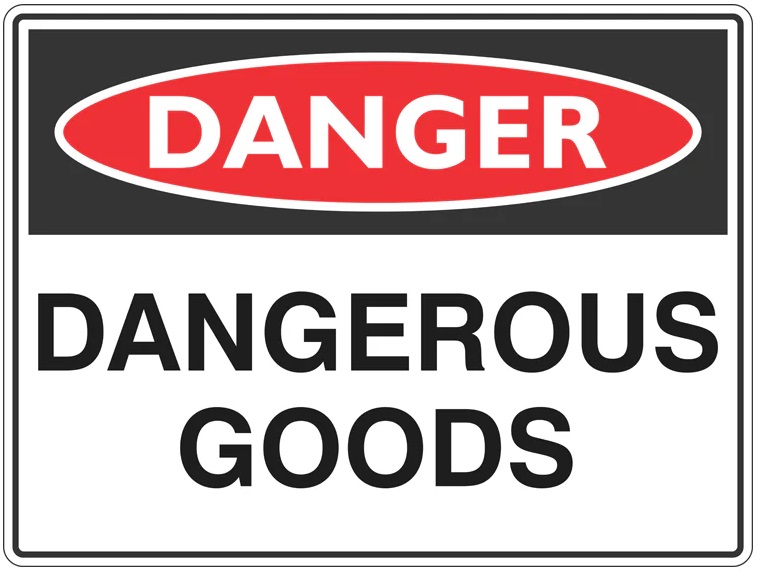
Elevating Safety and Efficiency: The Indispensable Role of DGR Training
In the complex world of logistics and transportation, the safe handling and transport of dangerous goods are paramount. Ensuring the well-being of personnel, protecting the environment, and complying with stringent regulations demand a level of expertise that goes beyond standard operational procedures. This is where Dangerous Goods Regulations (DGR) training steps in, providing a comprehensive framework for professionals involved in the transportation of hazardous materials. In this exploration, we delve into the critical significance of DGR training, examining its core components, regulatory compliance, and the far-reaching benefits it brings to the logistics industry.
Understanding the Importance of DGR Training:
The transportation of dangerous goods presents inherent risks, both to the individuals involved and to the communities through which these goods travel. DGR training serves as a crucial tool in mitigating these risks, ensuring that every step of the logistics process is executed with precision, adherence to safety protocols, and compliance with international regulations.
Key Components of DGR Training:
Regulatory Awareness:
DGR training begins with a comprehensive understanding of the regulatory landscape governing the transportation of dangerous goods. Familiarity with international regulations, such as the International Air Transport Association (IATA) Dangerous Goods Regulations and the International Maritime Dangerous Goods (IMDG) Code, forms the foundation of regulatory compliance.
Classification of Dangerous Goods:
Identifying and classifying dangerous goods according to their inherent risks is a fundamental aspect of DGR training. This includes understanding the various hazard classes, packing groups, and compatibility of different substances.
Proper Documentation:
Accurate documentation is a cornerstone of safe and compliant transport. DGR training equips professionals with the knowledge to prepare and review the necessary documentation, including shipping papers, labels, and markings, to ensure adherence to regulatory requirements.
Packaging and Handling:
Ensuring the integrity of packaging and implementing proper handling procedures are critical in preventing accidents during transportation. DGR training provides insights into selecting appropriate packaging materials, securing shipments, and implementing measures to prevent leaks or spills.
Emergency Response Preparedness:
In the event of an emergency, swift and informed responses are crucial. DGR training includes scenarios and simulations to prepare professionals for handling emergencies such as spills, leaks, or fires associated with dangerous goods.
The Regulatory Landscape:
International and national bodies have established stringent regulations to govern the transportation of dangerous goods. For air transport, the IATA Dangerous Goods Regulations set forth guidelines that are globally recognized and adhered to by airlines and logistics professionals. Similarly, the IMDG Code regulates the maritime transport of dangerous goods, ensuring safety and compliance in the shipping industry.
National regulatory bodies, such as the Federal Aviation Administration (FAA) in the United States and the Civil Aviation Authority (CAA) in the United Kingdom, further reinforce these international regulations, emphasizing the need for professionals involved in the transportation of dangerous goods to undergo specialized training.
Benefits of DGR Training:
Enhanced Safety:
The primary objective of DGR training is to enhance safety throughout the entire transportation process. From proper packaging to emergency response preparedness, trained professionals are better equipped to prevent accidents and respond effectively in the event of an incident.
Regulatory Compliance:
DGR training ensures that logistics professionals are well-versed in international and national regulations governing the transportation of dangerous goods. This knowledge is critical to avoid legal repercussions and maintain the integrity of the supply chain.
Risk Mitigation:
Identifying and mitigating risks associated with the transportation of dangerous goods is a core component of DGR training. From proper handling techniques to implementing preventive measures, training minimizes the likelihood of accidents and potential harm.
Operational Efficiency:
Trained professionals contribute to operational efficiency by streamlining processes related to the transportation of dangerous goods. This includes accurate documentation, proper packaging, and adherence to safety protocols, ultimately reducing the likelihood of delays or disruptions.
Protection of Reputation:
The safe and compliant transportation of dangerous goods reflects positively on the reputation of logistics companies. Clients and stakeholders place a premium on safety, and organizations with a track record of DGR compliance are more likely to earn trust and repeat business.
Industry-Specific DGR Training Programs:
Recognizing the diverse nature of industries involved in the transportation of dangerous goods, specialized DGR training programs cater to specific needs. These may include air cargo operations, maritime shipping, ground transportation, and courier services. Tailoring training to industry-specific requirements ensures that professionals are well-prepared to handle the unique challenges posed by their respective sectors.
Challenges in DGR Training:
Complexity of Regulations:
The intricate web of international and national regulations governing dangerous goods can be overwhelming. DGR training must effectively distill this complexity, ensuring that professionals can navigate and apply regulations with confidence.
Evolution of Hazardous Materials:
The landscape of dangerous goods is dynamic, with new materials and substances being classified regularly. DGR training programs must adapt to these changes, providing updated information to keep professionals abreast of the latest developments.
Global Consistency:
Achieving global consistency in DGR training poses a challenge, especially in regions where adherence to international regulations may vary. Efforts to harmonize training standards globally are essential to ensure a unified approach to dangerous goods transportation.
Conclusion:
In the intricate web of logistics and transportation, DGR training emerges as a beacon of safety and regulatory compliance. Its significance extends beyond operational efficiency to encompass the protection of lives, the environment, and the reputation of industries involved in the transportation of dangerous goods.
As the global supply chain continues to evolve, the importance of DGR training becomes increasingly pronounced. It is not merely a requirement imposed by regulations but a commitment to excellence and responsibility in an industry where the stakes are high. As logistics professionals undergo specialized DGR training, they become the vanguards of safety, ensuring that the currents of the supply chain flow securely, protecting all those in their wake.



